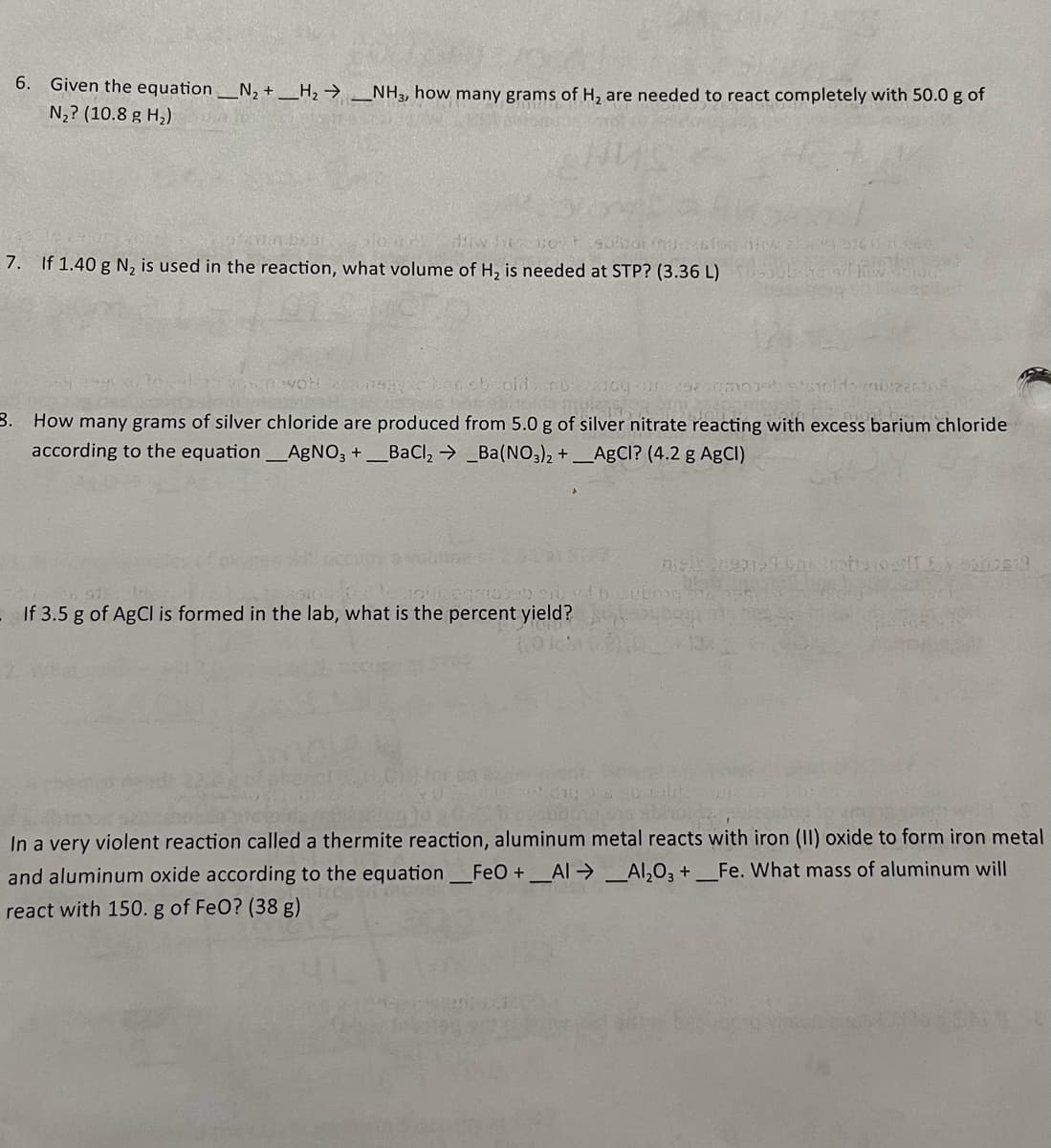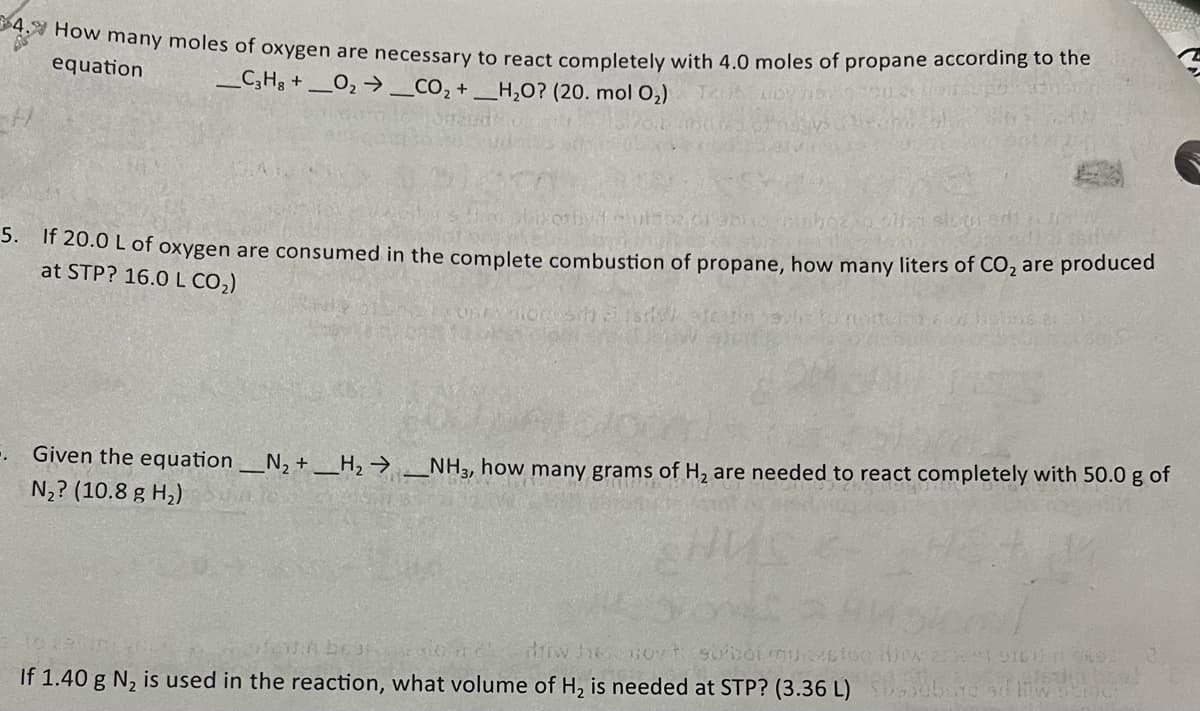Principles of Modern Chemistry
8th Edition
ISBN:9781305079113
Author:David W. Oxtoby, H. Pat Gillis, Laurie J. Butler
Publisher:David W. Oxtoby, H. Pat Gillis, Laurie J. Butler
Chapter9: The Gaseous State
Section: Chapter Questions
Problem 37P
Related questions
Question
Could you answer this questions?

Transcribed Image Text:6.
Given the equation_N, + _H2 → _NH3, how many grams of H, are needed to react completely with 50.0 g of
N,? (10.8 g H2)
7. If 1.40 g N, is used in the reaction, what volume of H, is needed at STP? (3.36 L)
wol
3. How many grams of silver chloride are produced from 5.0 g of silver nitrate reacting with excess barium chloride
सी
according to the equationAgNO, +
BaCl, → _Ba(NO3)2 + _AgCl? (4.2 g AgCI)
avole
If 3.5 g of AgCl is formed in the lab, what is the percent yield?
In a very violent reaction called a thermite reaction, aluminum metal reacts with iron (II) oxide
form irc
metal
and aluminum oxide according to the equation
FeO+ Al→ _Al,O3 + _Fe. What mass of aluminum will
react with 150. g of FeO? (38 g)

Transcribed Image Text:4. How many moles of oxygen are necessary to react completely with 4.0 moles of propane according to the
equation
_C,Hg + _O2 →_CO, +,
H,O? (20. mol 0,)
3. " 20.0 L of oxygen are consumed in the complete combustion of propane, how many liters of CO2 are produced
at STP? 16.0 L CO,)
-- Given the equation_N,+ _H2 → __NH3, how many grams of H, are needed to react completely with 50.0 g of
N,? (10.8 g H,)
If 1.40 g N, is used in the reaction, what volume of H, is needed at STP? (3.36 L) eb d sd w
Expert Solution
This question has been solved!
Explore an expertly crafted, step-by-step solution for a thorough understanding of key concepts.
Step by step
Solved in 3 steps

Knowledge Booster
Learn more about
Need a deep-dive on the concept behind this application? Look no further. Learn more about this topic, chemistry and related others by exploring similar questions and additional content below.Recommended textbooks for you

Principles of Modern Chemistry
Chemistry
ISBN:
9781305079113
Author:
David W. Oxtoby, H. Pat Gillis, Laurie J. Butler
Publisher:
Cengage Learning


Chemistry: An Atoms First Approach
Chemistry
ISBN:
9781305079243
Author:
Steven S. Zumdahl, Susan A. Zumdahl
Publisher:
Cengage Learning

Principles of Modern Chemistry
Chemistry
ISBN:
9781305079113
Author:
David W. Oxtoby, H. Pat Gillis, Laurie J. Butler
Publisher:
Cengage Learning


Chemistry: An Atoms First Approach
Chemistry
ISBN:
9781305079243
Author:
Steven S. Zumdahl, Susan A. Zumdahl
Publisher:
Cengage Learning

Chemistry
Chemistry
ISBN:
9781305957404
Author:
Steven S. Zumdahl, Susan A. Zumdahl, Donald J. DeCoste
Publisher:
Cengage Learning

Chemistry: Principles and Reactions
Chemistry
ISBN:
9781305079373
Author:
William L. Masterton, Cecile N. Hurley
Publisher:
Cengage Learning

Chemistry: The Molecular Science
Chemistry
ISBN:
9781285199047
Author:
John W. Moore, Conrad L. Stanitski
Publisher:
Cengage Learning